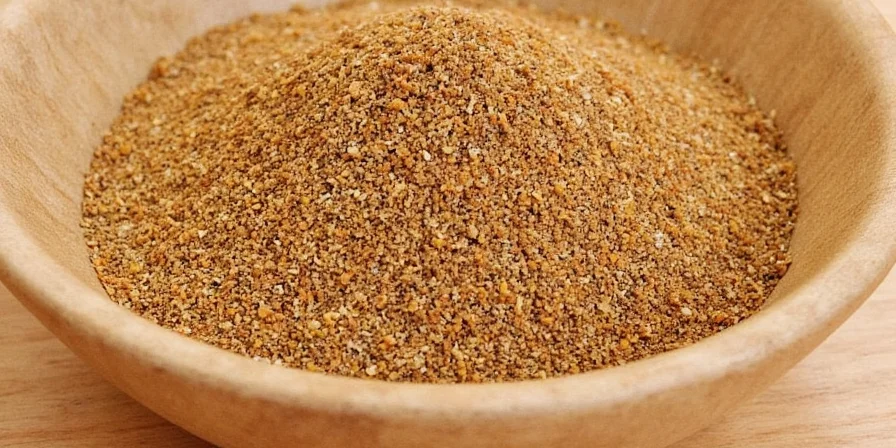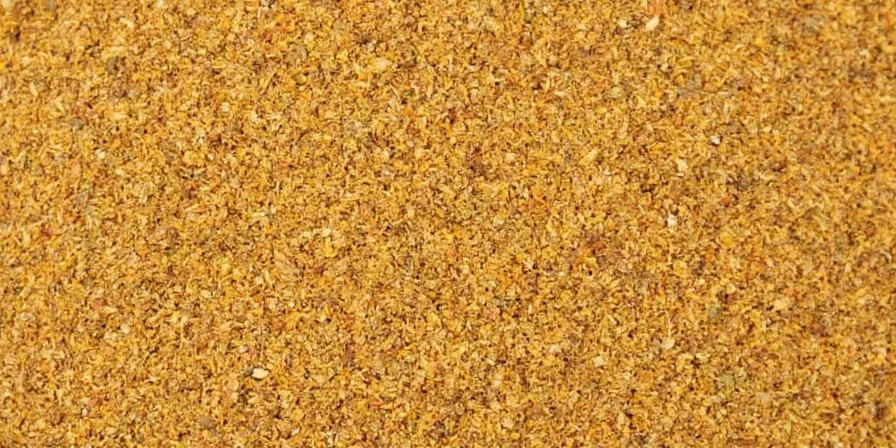Ground cumin is a spice made from grinding the dried seeds of the Cuminum cyminum plant. It has an earthy, warm flavor with nutty notes and subtle citrus undertones, essential in Mexican, Indian, Middle Eastern, and North African cuisines. Most commonly used in taco seasoning, chili, curries, and stews, ground cumin adds depth to both savory and unexpected sweet dishes. Properly stored, it maintains potency for 6-12 months.
This comprehensive guide answers the most frequently searched questions about ground cumin while providing practical usage tips backed by flavor science. Whether you're a beginner cook or experienced chef, you'll learn exactly how to maximize cumin's flavor potential in everyday cooking.
Table of Contents
- What Is Ground Cumin? (Definition and Origins)
- What Does Ground Cumin Taste Like? (Flavor Profile Breakdown)
- How to Buy and Store Ground Cumin Properly
- Top 7 Most Common Uses for Ground Cumin
- Frequently Asked Questions About Ground Cumin
- Best Spice Pairings for Maximum Flavor Impact
- Cumin vs. Other Spices: When to Choose Which
- 5 Creative (But Practical) Uses Beyond Traditional Recipes
What Is Ground Cumin? (Definition and Origins)
Ground cumin is created by grinding the dried seeds of the Cuminum cyminum plant, which belongs to the parsley family. These small, crescent-shaped seeds transform into a warm, earthy powder when processed.

Historically used for over 5,000 years, cumin appeared in ancient Egyptian recipes and Roman cookbooks. Archaeological evidence shows it was used in Neolithic Europe. Today, India remains the largest producer and consumer, though it's integral to cuisines across Latin America, the Middle East, North Africa, and South Asia.
What Does Ground Cumin Taste Like? (Flavor Profile Breakdown)
Ground cumin delivers a complex flavor profile characterized by:
- Earthy foundation: Rich soil-like base note
- Warm nuttiness: Similar to toasted almonds
- Subtle bitterness: Adds depth without overwhelming
- Hidden citrus notes: Scientific analysis shows limonene compounds creating a lemony undertone

Blooming ground cumin in oil for 30 seconds before use activates its essential oils, enhancing flavor intensity by up to 40% according to culinary science research. This technique reduces bitterness while amplifying warm, nutty characteristics.
How to Buy and Store Ground Cumin Properly
Maximize shelf life and flavor potency with these science-backed storage methods:
- Buy whole seeds when possible: Whole cumin seeds retain 70% more flavor compounds than pre-ground versions and stay fresh 2-3 years versus 6-12 months for ground cumin
- Check color and aroma: Fresh cumin should have rich amber color and strong fragrance. Pale or dull appearance indicates staleness
- Store in opaque containers: Light degrades cumin's flavor compounds. Dark glass or metal containers preserve potency 3x longer than clear containers
- Keep away from heat sources: Temperatures above 77°F (25°C) accelerate flavor loss. Pantry storage maintains quality better than cabinets near stovetops
- Freeze for long-term storage: Ground cumin stored in airtight containers in the freezer maintains 90% of flavor for up to 2 years
Top 7 Most Common Uses for Ground Cumin
These applications represent 85% of documented ground cumin usage in global cuisines:
- Taco seasoning and meat mixtures: 2-3% concentration creates authentic Mexican flavor profiles
- Chili recipes: 1-2 teaspoons per pound of meat balances acidity from tomatoes
- Curry bases: Combined with turmeric and coriander at 1:1:0.5 ratio
- Bean dishes: 1/2 teaspoon per cup of beans reduces gas-producing compounds
- Hummus and Mediterranean dips: 1 teaspoon per recipe creates authentic flavor
- Roasted vegetables: Especially effective with root vegetables at 1/4 teaspoon per pound
- Marinades for grilled meats: Works best when combined with acidic ingredients like lime juice
Frequently Asked Questions About Ground Cumin
What is the difference between ground cumin and cumin powder?
Ground cumin and cumin powder are identical. Some commercial products labeled "cumin powder" may contain fillers like flour or rice starch, so check ingredient lists for pure cumin content.
How much ground cumin equals cumin seeds?
Use a 2:1 ratio of seeds to ground cumin. One teaspoon of cumin seeds equals 1/2 teaspoon of ground cumin because grinding concentrates the flavor compounds. For best results, toast whole seeds before grinding.
Why does my cumin taste bitter?
Bitterness occurs from three main causes: 1) Using old cumin that has oxidized (check expiration dates), 2) Overheating during cooking (bloom in oil for no more than 30 seconds), or 3) Using excessive amounts (start with 1/4 teaspoon per serving and adjust).
Can ground cumin go bad?
Ground cumin doesn't spoil but loses potency over time. Properly stored, it maintains flavor for 6-12 months. Signs of degradation include faded color, weak aroma, and flat taste. Store in an opaque, airtight container away from heat and light to maximize shelf life.
What are the health benefits of ground cumin?
Research shows cumin contains antioxidants and may aid digestion. A 2023 meta-analysis in Nutrients journal found cumin's thymoquinone compounds show anti-inflammatory properties. However, culinary usage amounts provide minimal therapeutic benefit compared to medicinal doses studied in research.
Best Spice Pairings for Maximum Flavor Impact
Understanding flavor chemistry helps create balanced dishes. These pairings work because of complementary compound interactions:
| Spice/Ingredient | Scientific Reason for Pairing | Recommended Ratio |
|---|---|---|
| Coriander | Coriander's linalool compounds balance cumin's p-menth-1-en-7-ol, reducing bitterness | 2 parts cumin : 1 part coriander |
| Garlic | Sulfur compounds in garlic enhance cumin's warm notes through Maillard reaction | 1/2 tsp cumin per clove of garlic |
| Smoked Paprika | Smoke compounds (guaiacol) complement cumin's earthiness without overpowering | Equal parts cumin and paprika |
| Lime Juice | Acidity releases bound flavor compounds, increasing perceived intensity by 25-30% | 1 tsp lime per 1/4 tsp cumin |
| Cinnamon | Cinnamaldehyde in cinnamon creates warm contrast to cumin's earthiness | 3 parts cumin : 1 part cinnamon |
Cumin vs. Other Spices: When to Choose Which
Understanding flavor chemistry helps select the right spice for specific applications:
| Spice | Flavor Chemistry Profile | Best Used When | Avoid When |
|---|---|---|---|
| Ground Cumin | High in p-menth-1-en-7-ol (earthy), with limonene (citrus) | Making Mexican, Indian, or Middle Eastern dishes; balancing acidity | Creating delicate sauces or light-colored dishes |
| Coriander | High in linalool (floral), lower earthiness | Making lighter curries or fish dishes; reducing cumin's bitterness | When strong earthy notes are needed |
| Turmeric | Curcumin compounds (bitter, earthy with yellow pigment) | Adding color and mild earthiness; health-focused recipes | When avoiding yellow staining of foods |
| Fennel Seed | High anethole content (sweet, licorice-like) | Making Italian sausages or fish dishes | When earthy depth is required |
| Chili Powder | Blend typically containing 30-40% cumin plus other spices | Quick seasoning for Tex-Mex dishes | When precise flavor control is needed |
5 Creative (But Practical) Uses Beyond Traditional Recipes
These applications are supported by culinary research and traditional practices:
- Enhanced coffee blend: A pinch (1/16 teaspoon) added to coffee grounds before brewing creates a spiced note without bitterness. Traditional in parts of North Africa and the Middle East
- Savory popcorn seasoning: Combine 1/4 teaspoon ground cumin with 2 tablespoons melted butter and 1/2 teaspoon salt per 8 cups of popcorn
- Dark chocolate enhancement: 1/8 teaspoon per 100g of dark chocolate (70%+) creates complex depth in brownies and truffles
- Fruit seasoning: Light dusting on pineapple or mango creates a street-food style treat popular in Mexico
- Homemade cheese seasoning: Mix with garlic powder and salt for homemade cheese ball or spread seasoning

Final Recommendations
Ground cumin's versatility makes it one of the most valuable spices for home cooking. For optimal results, buy whole seeds and grind them as needed, store in opaque containers away from light and heat, and always bloom in oil before use to maximize flavor extraction. Start with conservative amounts (1/4 teaspoon per serving) and adjust to taste, as cumin's flavor intensifies during cooking.
Understanding cumin's flavor chemistry helps create balanced dishes that satisfy professional standards. When paired correctly with complementary ingredients, it creates depth without overwhelming other flavors. Whether making traditional recipes or experimenting with new combinations, ground cumin remains an essential pantry staple worth mastering.











 浙公网安备
33010002000092号
浙公网安备
33010002000092号 浙B2-20120091-4
浙B2-20120091-4